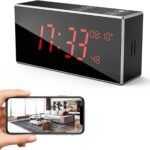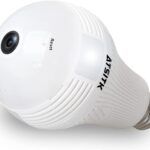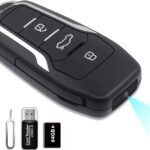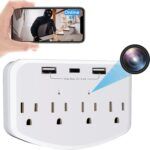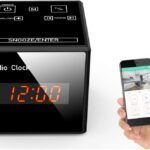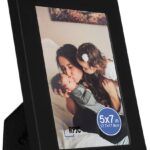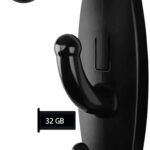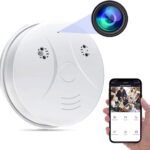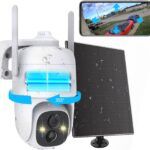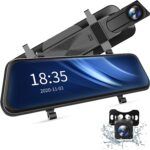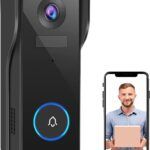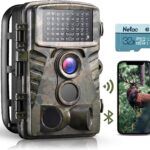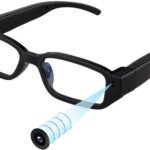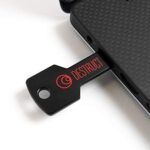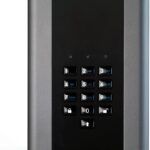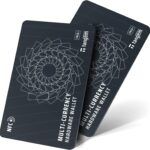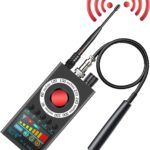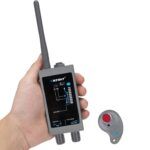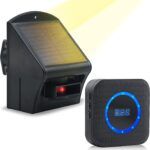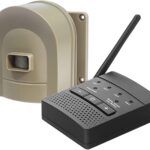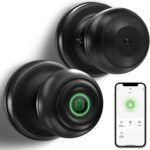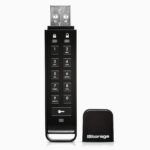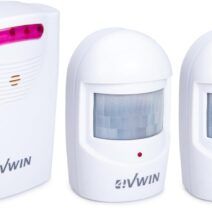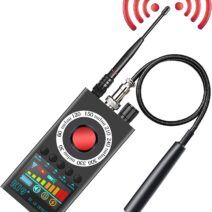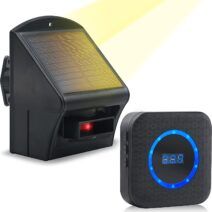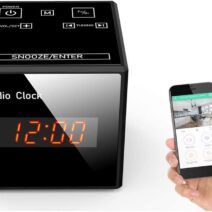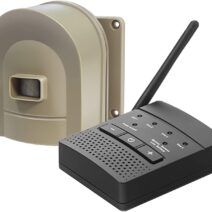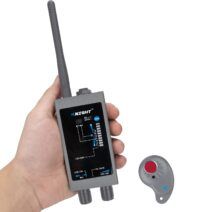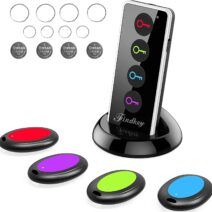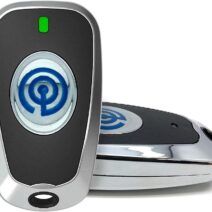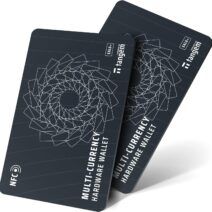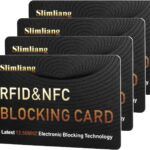- What is RF technology?
RF technology refers to Radio Frequency technology, which is a type of wireless communication technology that uses radio waves to transmit information. RF technology is used in various devices, such as radios, televisions, mobile phones, and Wi-Fi routers, to enable wireless communication between devices. RF works by transmitting and receiving radio waves, which are modulated to carry information, such as voice or data. This technology has become increasingly important in modern society, as it enables wireless communication, which has revolutionized the way people communicate and access information.
RF connectivity can also be used in security systems, such as hidden devices detectors and RFID blockers, to prevent unauthorized access to sensitive information or to detect the presence of hidden cameras and trackers. RF technology has advantages such as convenience and flexibility, but it also has potential disadvantages, such as interference and security risks, which need to be carefully considered when using this technology.
- What is RFID technology?
RFID stands for Radio Frequency Identification, which is a wireless technology used to transmit information between a tag or label and a reader. RFID technology uses radio waves to transfer data from the tag to the reader. The tag contains a microchip and an antenna, while the reader has an antenna to receive the signal and a decoder to convert the radio waves into data. RFID technology is used in a variety of applications, such as tracking inventory in warehouses, identifying animals, and enabling contactless payments. It is becoming increasingly popular due to its ability to track and identify objects quickly and efficiently.
- What's the difference between RF and RFID?
RF (Radio Frequency) technology and RFID (Radio Frequency Identification) technology work similarly, in that they use radio waves to transmit information wirelessly.
In RF technology, a device transmits a radio signal at a certain frequency, which can be picked up by a receiver tuned to that frequency. This technology is used in many applications, including broadcasting, wireless communication, and remote controls. In the case of RF protection devices, they emit signals that can detect and locate other RF signals that may be used for spying, tracking, or other unauthorized purposes.
RFID technology works by using small RFID tags or chips that contain a tiny antenna and a microchip. When an RFID reader sends out a radio signal, it energizes the antenna on the tag, which sends back a signal containing its unique identification code. This technology is used in many applications, including inventory tracking, payment systems, and access control. In the case of RFID blocking devices, they work by preventing RFID signals from being read or transmitted, thus protecting sensitive information from being stolen.
- How do I know if my personal information is at risk from RF and RFID devices?
It is challenging to determine if your personal information is at risk from RF and RFID devices because they operate wirelessly and are often undetectable. However, if you suspect that someone is trying to steal your information using these devices, you can use an RF or RFID detector to identify the presence of these devices. You can also take preventative measures, such as using RFID blocking sleeves or wallets for your credit cards and passports, to ensure that your personal information is not vulnerable to theft. Additionally, you can avoid using RFID-enabled cards and devices if you are concerned about your privacy and security.
- Can RF and RFID devices be used for tracking people?
RF and RFID devices can be used for tracking people, but the ability to do so depends on the specific device and its capabilities. RFID technology, in particular, is commonly used for tracking inventory and goods in retail and manufacturing industries. However, some RFID devices are designed for tracking people, such as those used in access control systems for buildings or in tracking equipment and personnel in hospitals.
RF technology can also be used for tracking people, such as in the case of GPS tracking devices or RF beacons. These devices emit a signal that can be picked up by a receiver, allowing the user to track the location of the device and, by extension, the person carrying it. However, it’s important to note that the use of tracking devices without consent can be illegal and unethical, and there are laws in place to protect individuals’ privacy rights.
- How does a Faraday cage protect against RF and RFID devices?
A Faraday cage is a type of enclosure that is designed to block electromagnetic fields, including RF and RFID signals. It works by using conductive materials to create a barrier that prevents these fields from entering the cage or escaping from it. The cage can be made of various materials, such as metal mesh or sheets of conductive material like copper or aluminum.
When an RF or RFID signal encounters a Faraday cage, it induces an electric current in the cage, which in turn generates an opposing electromagnetic field. The two fields cancel each other out, effectively blocking the signal from passing through the cage. This makes a Faraday cage an effective way to protect against RF and RFID devices, as well as other types of electromagnetic interference. It can be used to protect sensitive equipment or materials from outside interference, or to prevent the leakage of electromagnetic radiation from a device inside the cage.
 $14.99Ticonn Faraday Bag - Car Key Fobs & Credit Cards Signal Blocker
$14.99Ticonn Faraday Bag - Car Key Fobs & Credit Cards Signal BlockerTiconn's Faraday Bag for Car Fobs is a must-have for car owners who want to protect their vehicles from theft. The bag is designed to provide complete...
 $19.95Ticonn Faraday Box Signal Blocker
$19.95Ticonn Faraday Box Signal BlockerIf you're looking for a reliable way to protect your car keys from theft, the TICONN Faraday Box Signal Blocker might be just what you need. Made of p...
- Can RF and RFID devices be used to steal my credit card information?
RF and RFID devices can be used to steal credit card information through a process called skimming. Skimming is the act of using a device to read the information stored on the magnetic stripe or chip of a credit card. Thieves can use handheld skimming devices or install skimming equipment on ATMs or gas pumps to steal credit card information.
However, there are now many products available that offer RFID blocking technology, such as RFID blocking sleeves, wallets, and cards. These products use materials that block the RF signals, preventing them from being picked up by skimming devices. It is important to take measures to protect your credit card information to avoid falling victim to identity theft and fraud.
 $14.99Ticonn Faraday Bag - Car Key Fobs & Credit Cards Signal Blocker
$14.99Ticonn Faraday Bag - Car Key Fobs & Credit Cards Signal BlockerTiconn's Faraday Bag for Car Fobs is a must-have for car owners who want to protect their vehicles from theft. The bag is designed to provide complete...
 $12.95Ticonn RFID Blocking Cards (4x)
$12.95Ticonn RFID Blocking Cards (4x)TICONN RFID Blocking Cards are an essential tool to protect yourself from data theft and financial identity theft. The cards block signals from high-t...
 $9.80Slimliang RFID & NFC Blocking Card Protector
$9.80Slimliang RFID & NFC Blocking Card ProtectorThe Slimliang RFID & NFC Blocking Card Protector offers a fuss-free solution for protecting your wallet or purse from electronic pickpocketing. Th...
 $39.95Spy Associates DeScammer Credit Card Skimmer Detector
$39.95Spy Associates DeScammer Credit Card Skimmer DetectorDeScammer Credit Card Skimmer Detector is a portable and effective device that helps you protect your financial information from scammers. With credit...
- Can RF and RFID devices be used to steal my car?
RF and RFID devices can be used to steal a car through a technique known as “relay theft.” This involves using two devices to intercept the signal from a car’s key fob, which is used to unlock and start the car. The first device, called a relay amplifier, picks up the signal from the key fob and sends it to the second device, called a relay transmitter, which broadcasts the signal to the car. The car’s system then responds as if the key fob were present, allowing the thief to unlock and start the car.
To prevent relay theft, car owners can use a Faraday cage or a Faraday bag to block the signal from their key fob. A Faraday cage is a metal enclosure that blocks electromagnetic fields, while a Faraday bag is a special type of fabric bag that is lined with a metallic material. When the key fob is placed inside the Faraday cage or bag, the signal is blocked, preventing the relay theft devices from picking it up.
 $14.99Ticonn Faraday Bag - Car Key Fobs & Credit Cards Signal Blocker
$14.99Ticonn Faraday Bag - Car Key Fobs & Credit Cards Signal BlockerTiconn's Faraday Bag for Car Fobs is a must-have for car owners who want to protect their vehicles from theft. The bag i...
 $19.95Ticonn Faraday Box Signal Blocker
$19.95Ticonn Faraday Box Signal BlockerIf you're looking for a reliable way to protect your car keys from theft, the TICONN Faraday Box Signal Blocker might be...
- Can a hidden device detector detect all types of RF and RFID devices?
A hidden device detector is a device designed to detect various types of hidden devices, including those that use RF and RFID technologies. However, it’s important to note that not all hidden device detectors are created equal and may have different capabilities when it comes to detecting specific types of devices. For example, some detectors may be more effective at detecting RF signals than RFID signals or vice versa. It’s important to carefully review the specifications and capabilities of any hidden device detector before making a purchase to ensure that it can meet your specific needs.
In addition, it’s worth noting that there is no guarantee that a hidden device detector will detect every single RF or RFID device. The technology used in these devices is constantly evolving and becoming more sophisticated, which means that there may be some devices that can evade detection. However, a good quality hidden device detector can provide an added layer of security and peace of mind by detecting many types of hidden devices and alerting you to their presence.
 $129.99Knight KT9000 Premium Hidden Devices Detector
$129.99Knight KT9000 Premium Hidden Devices DetectorThe KNIGHT KT9000 hidden camera detector is a must-have tool for anyone who wants to ensure the privacy and security of their personal and professional life. This device is designed to be used by secu...
 $69.89BTFDREEM Hidden Devices Detector - Find Bugs, Cameras & Trackers
$69.89BTFDREEM Hidden Devices Detector - Find Bugs, Cameras & TrackersThe K19+ RF Detector & Camera Finder is an advanced and professional device that incorporates multiple detection modes in one compact and portable package. With four features including RF Signal B...
RF & RFID trackers, cameras, tools, gadgets and protection devices and items to keep your information safe and secure.
Showing all 15 products:

4VWIN Wireless Motion Detection Driveway Alarm
$26.99
BTFDREEM Hidden Devices Detector – Find Bugs, Cameras & Trackers
$69.89
ChunHee Wireless Solar Driveway Alert
$35.99
Forthaus FM Radio Hidden Spy Camera
$109.99
Hosmart Driveaway Wireless Alarm Sensor
$44.99
Knight KT9000 Premium Hidden Devices Detector
$129.99
Ldcx Wireless RF Item Finders
$18.98
Monojoy Faraday Box Signal Jammer
$32.99
Slimliang RFID & NFC Blocking Card Protector
$9.80
Spy Associates DeScammer Credit Card Skimmer Detector
$39.95
TabCat Cat Collar Tracker
$119.99
Tangem Secure Cold Storage Crypto Wallet
$43.90
Ticonn Faraday Bag – Car Key Fobs & Credit Cards Signal Blocker
$14.99
Ticonn Faraday Box Signal Blocker
$19.95
Ticonn RFID Blocking Cards (4x)
$12.95
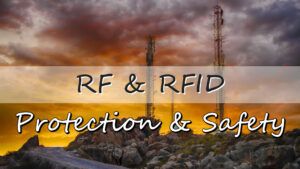
Radio frequency technology has many benefits, including efficient communication, low power requirements, and versatility. It is used in a wide range of devices, and has become an integral part of our daily lives and has revolutionized the way we communicate and interact with the world.
However, with the benefits come risks. RF technology has the potential to interfere with other devices and can pose a risk to human health. In addition, RF and RFID devices can be used for nefarious purposes, such as stealing personal information, tracking individuals, and stealing cars.
It is important for individuals to be aware of these risks and take steps to protect themselves from the potential harm that RF and RFID devices can cause. The RF and RFID protection and safety devices offered on our shop are designed to help you safeguard against the potential risks posed by these technologies.
RF & RFID Protection & Safety
Looking for RF and RFID protection and safety devices? Look no further than our shop, where we offer a variety of products to help keep you and your belongings safe. Our BTFDREEM Hidden Spy Devices Detector is perfect for finding bugs, cameras, and trackers that may be hiding in your space. The ChunHee Wireless Solar Driveway Alert can alert you when someone enters your property, while the Hosmart Driveway Wireless Alarm Sensor can do the same. For those concerned with credit card skimming, we offer the Spy Associates DeScammer Credit Card Skimmer Detector.
Looking for something a bit more high-tech? Check out the Tangem Secure Cold Storage Crypto Wallet, which offers a secure way to store your cryptocurrency. And for those worried about their car key fob or credit card signals being intercepted, we have a variety of options, including the Ticonn Faraday Bag, Ticonn Faraday Box, and Ticonn RFID Blocking Cards. With our selection of RF and RFID protection and safety devices, you can have peace of mind knowing that you are taking steps to keep yourself and your belongings safe.
RF & RFID Technology FAQ
In today’s increasingly connected world, we are constantly surrounded by RF and RFID devices, from our smartphones to our credit cards and even our cars. While these devices offer many benefits, they also come with risks, as they can be used to steal your personal information or track your movements.
Take steps to protect yourself from these risks by using RF and RFID protection products, such as Faraday cages, blocking cards, and hidden device detectors. By using RF and RFID protection products, you can take proactive measures to safeguard your personal information and protect your privacy.
With the increasing prevalence of cybercrime and identity theft, taking steps to protect ourselves from RF and RFID devices is more important than ever. By investing in these products, you can help your personal information remains secure, and minimize the risks to your privacy.

